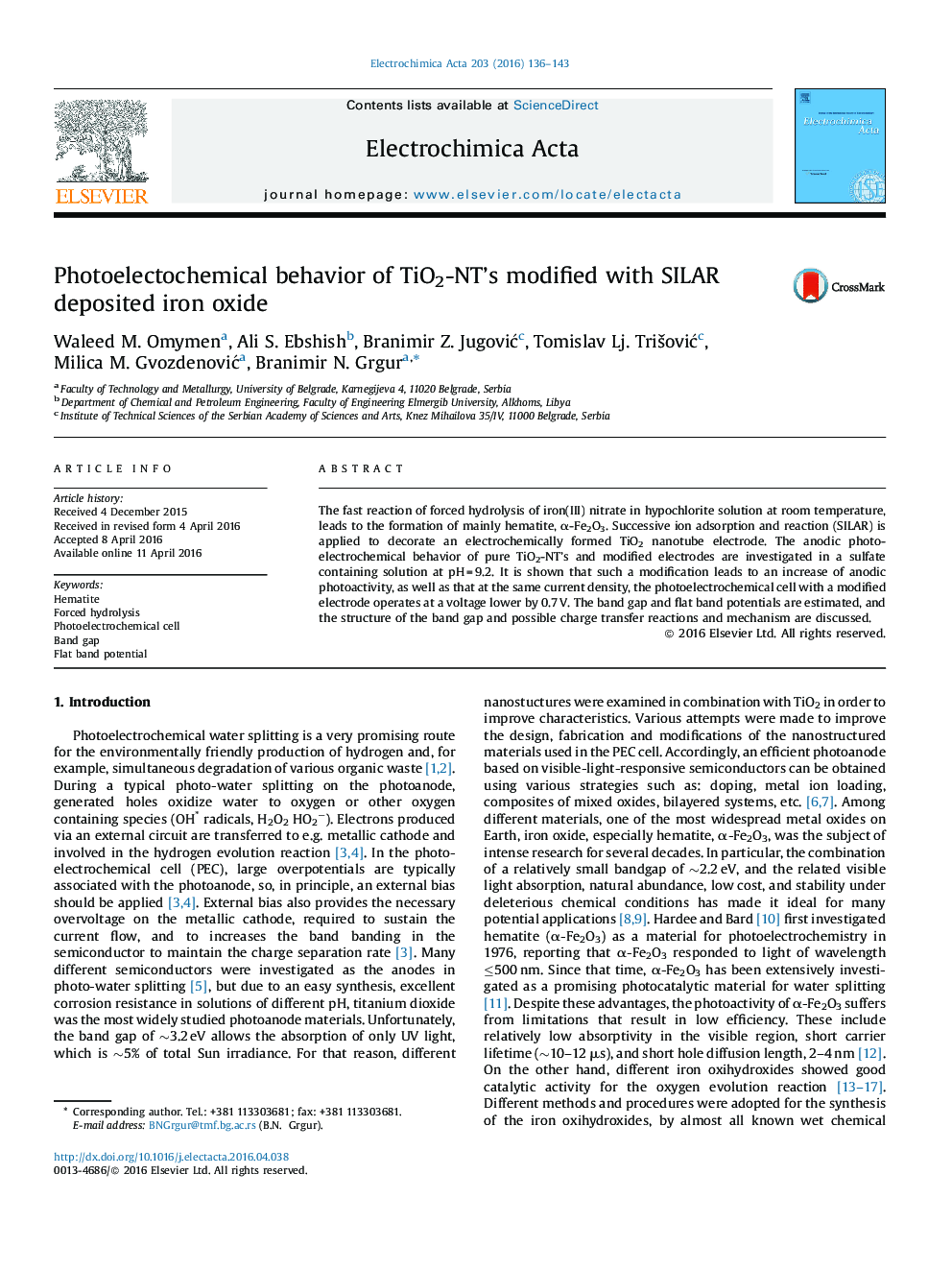| Article ID | Journal | Published Year | Pages | File Type |
|---|---|---|---|---|
| 182971 | Electrochimica Acta | 2016 | 8 Pages |
•α-Fe2O3 is obtained via fast forced hydrolysis in hypochlorite solution at room temperature.•α-Fe2O3 is deposidetd on TiO2-NT’s using SILAR.•Better anodic photoelectechemical behavior is obtained.•Flat band potentials and band gaps are determined.•The plausible mechanism is proposed.
The fast reaction of forced hydrolysis of iron(III) nitrate in hypochlorite solution at room temperature, leads to the formation of mainly hematite, α-Fe2O3. Successive ion adsorption and reaction (SILAR) is applied to decorate an electrochemically formed TiO2 nanotube electrode. The anodic photoelectrochemical behavior of pure TiO2-NT’s and modified electrodes are investigated in a sulfate containing solution at pH = 9.2. It is shown that such a modification leads to an increase of anodic photoactivity, as well as that at the same current density, the photoelectrochemical cell with a modified electrode operates at a voltage lower by 0.7 V. The band gap and flat band potentials are estimated, and the structure of the band gap and possible charge transfer reactions and mechanism are discussed.
